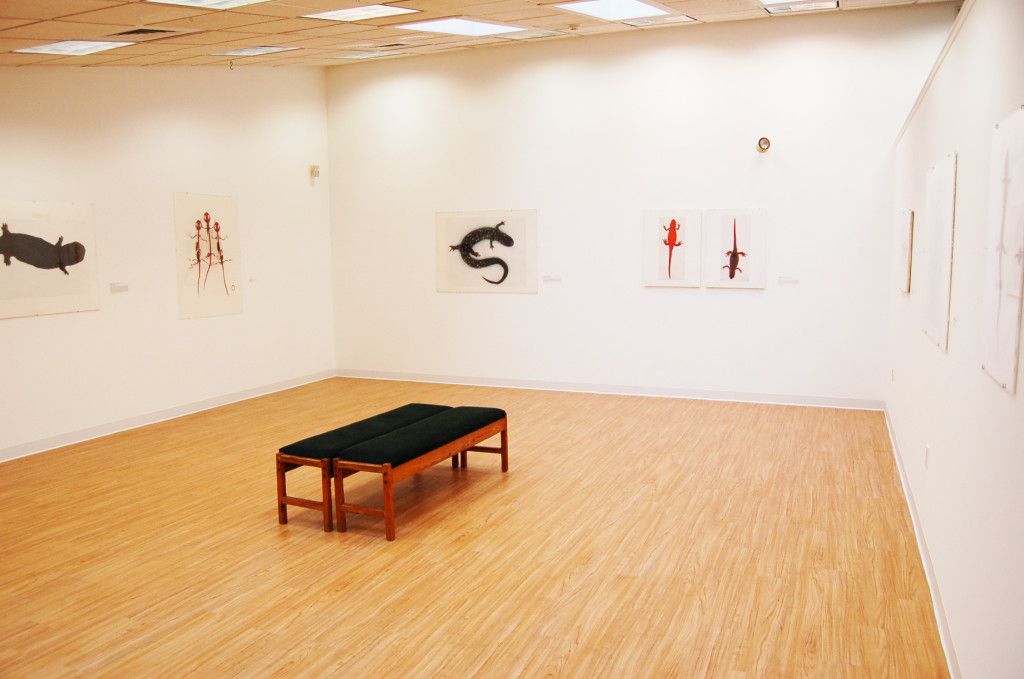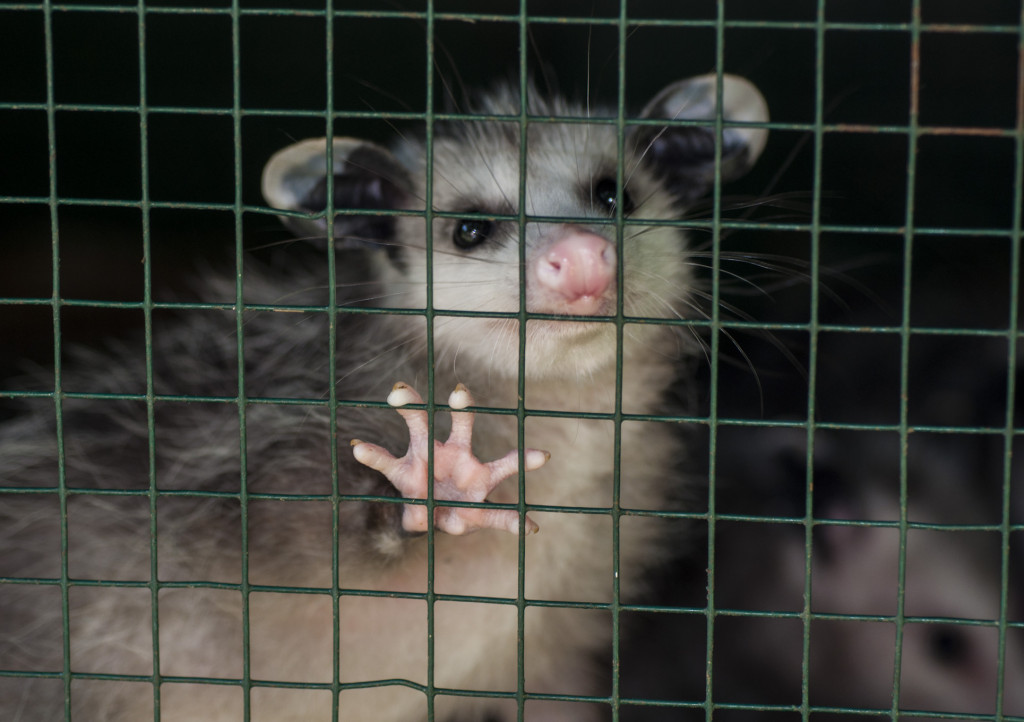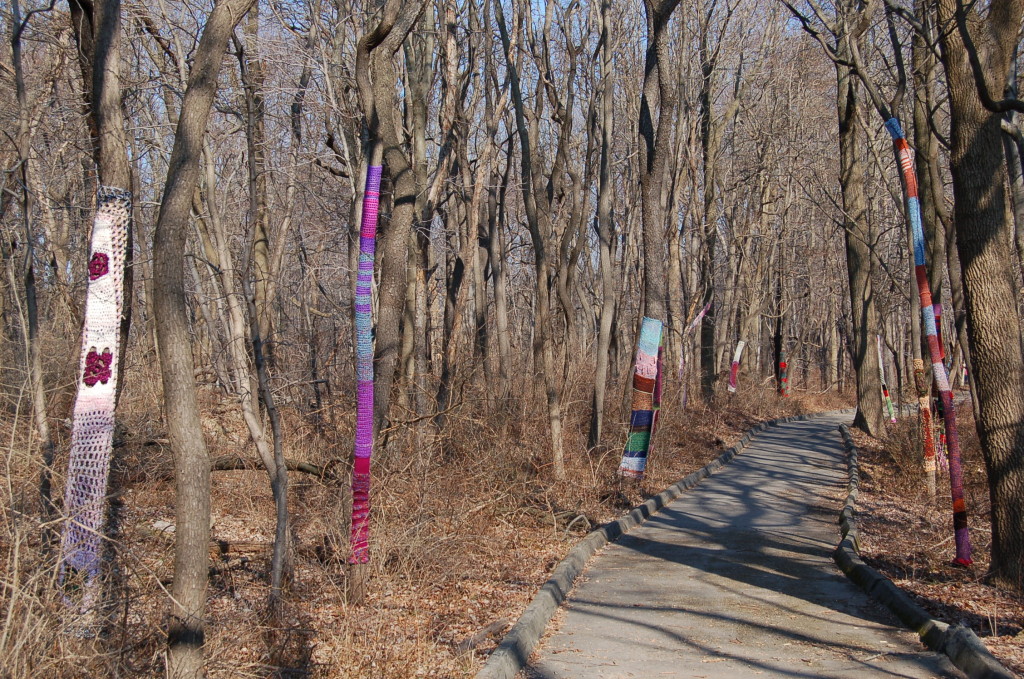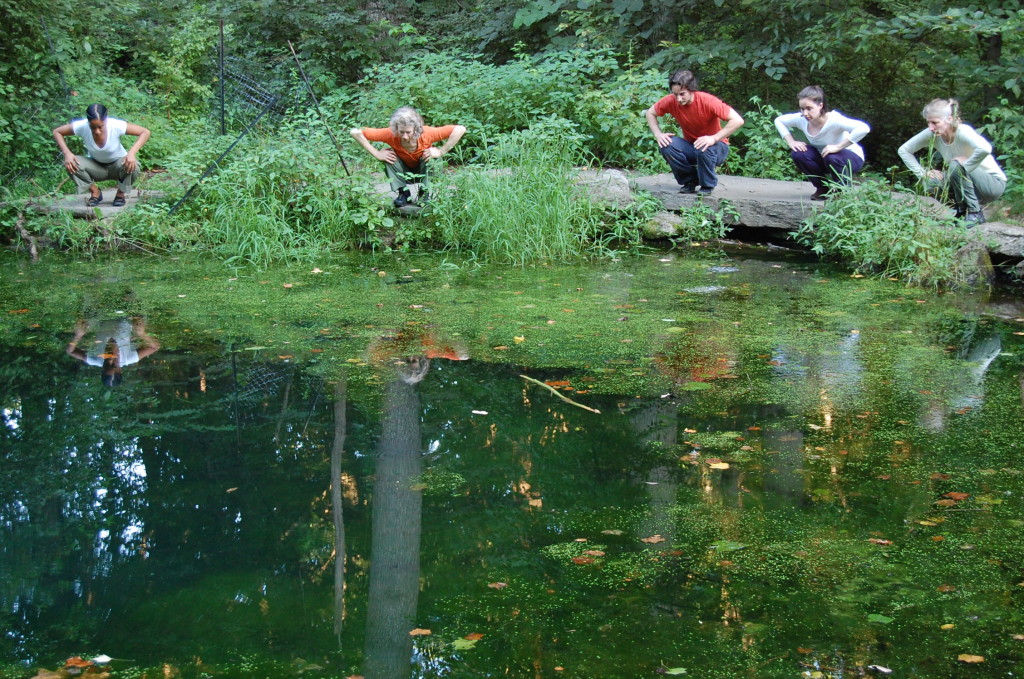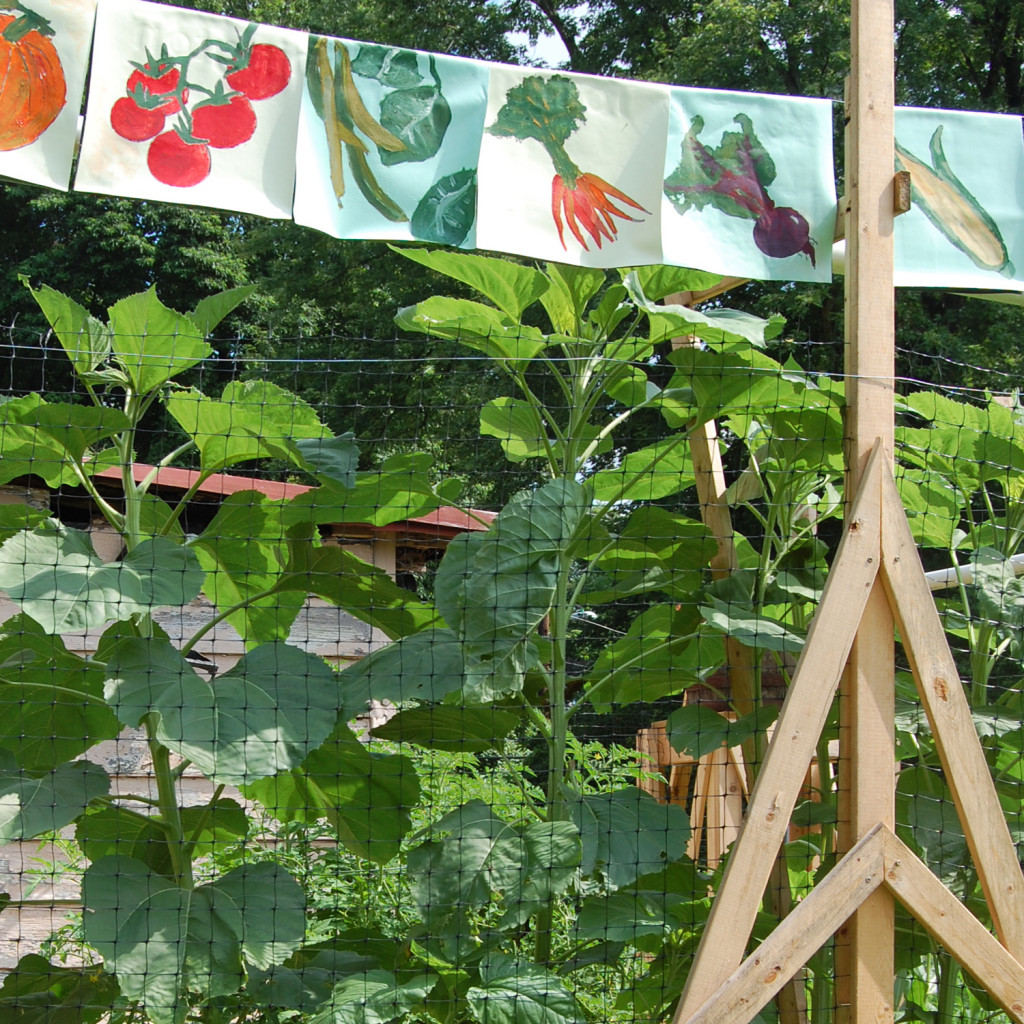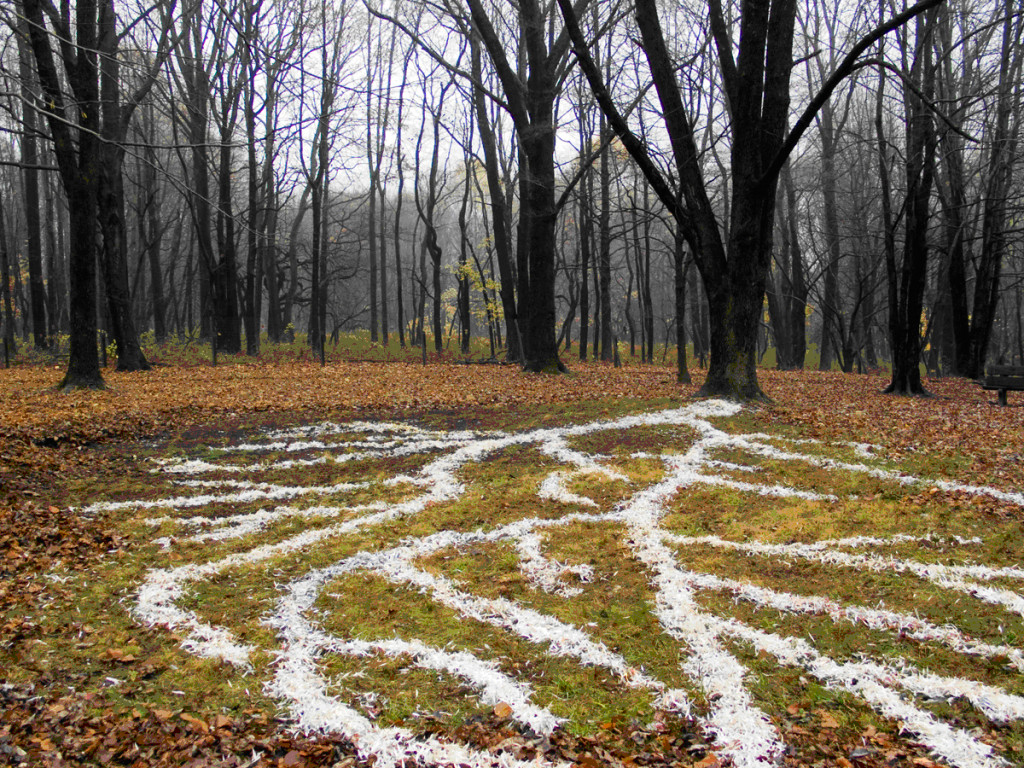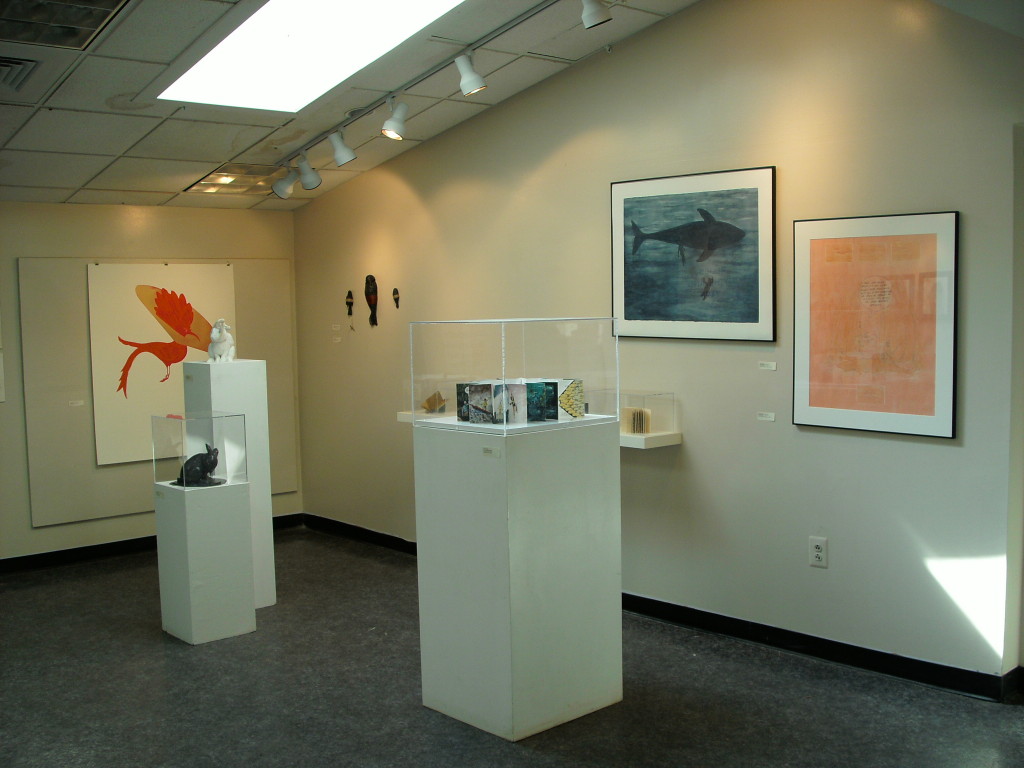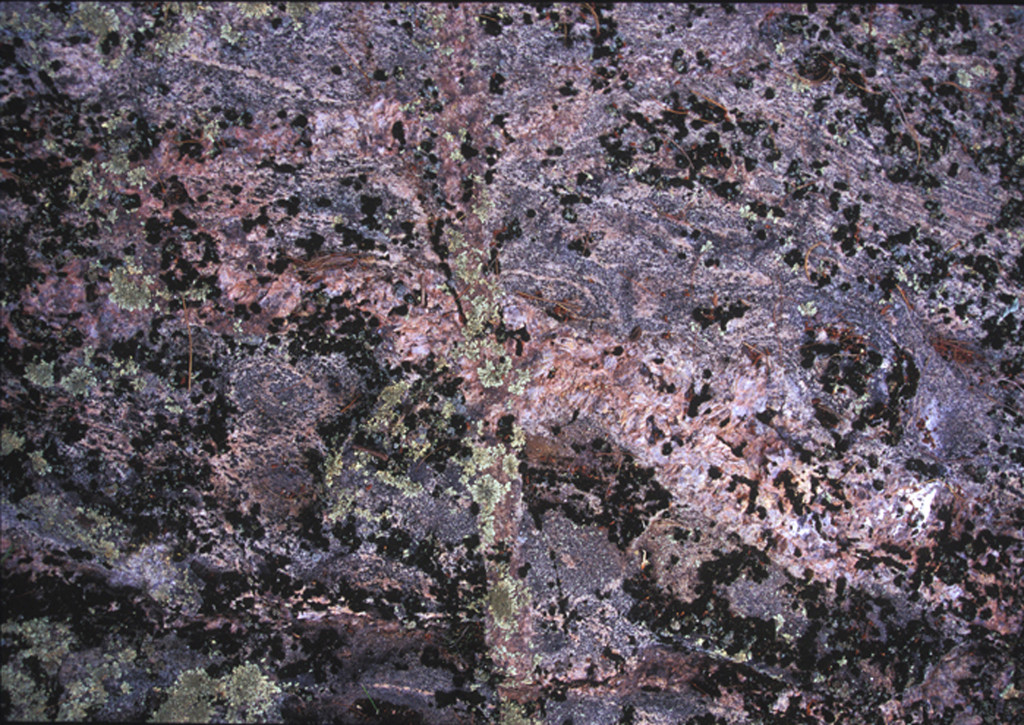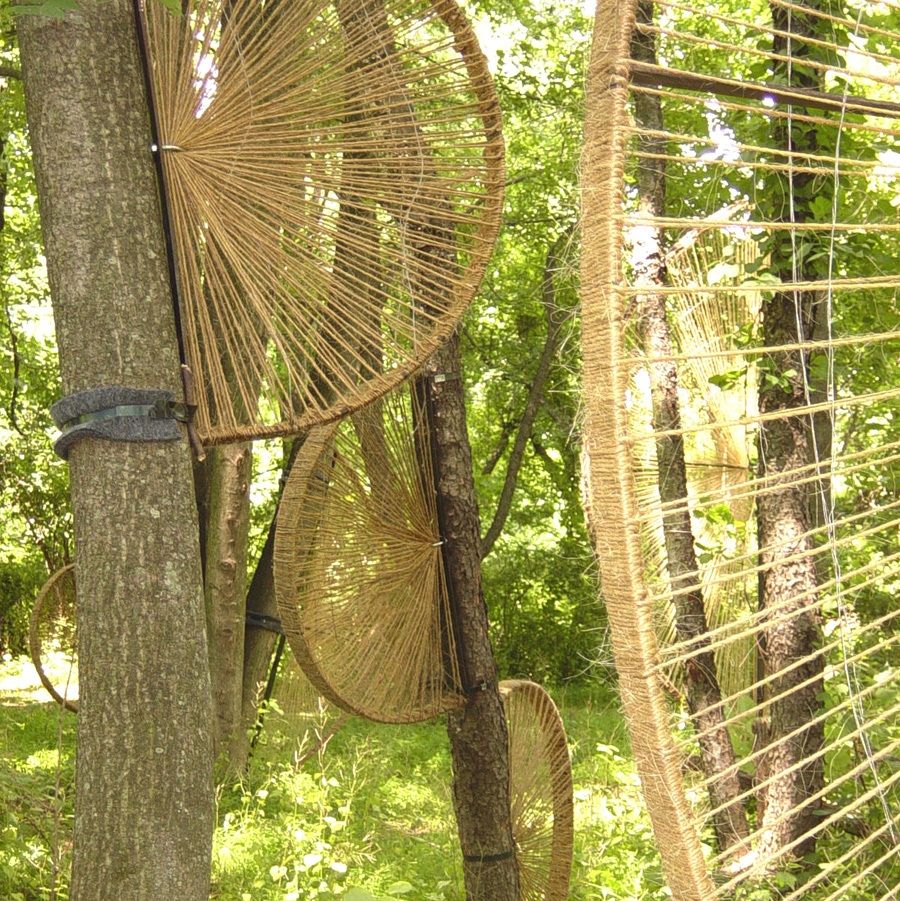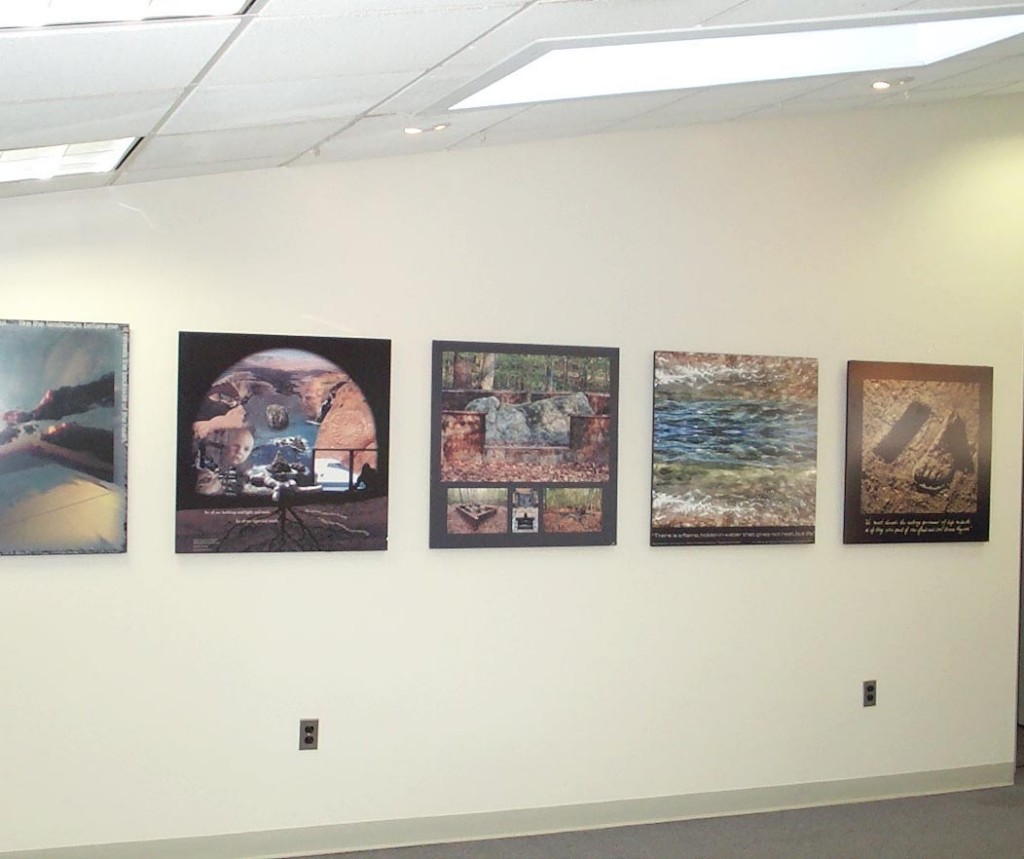By Christina Catanese, Director of Environmental Art
In 2000, Mary Salvante had an idea that the Schuylkill Center could be the perfect place to showcase environmental art. Nearly 15 years later, I’ve been reflecting on the past decade-and-a-half of environmental art at the Schuylkill Center: 20 outdoor exhibitions, 11 artist residencies, and dozens of shows in our gallery. Over the years, artists have grappled with issues and wonders in our ecosystem and shared their responses in diverse media. This post shows just a smattering of highlights of the art program going back to our very first gallery show and first artist-in-residence.
This January, we are kicking off the Schuylkill Center’s 50th anniversary celebration and celebrating fifteen years of environmental art at the Schuylkill Center with our fourth Annual Richard L. James Lecture by artist Mary Mattingly. Along with an interdisciplinary panel, Mattingly will reflect on the role of environmental art in a changing environment. With ecological challenges growing in complexity and scope, 2015 presents the perfect opportunity to consider the relationship of art and environment, and what it might look like in the next 15 years, 50 years, and beyond.
LandLab Residency (2014-2015), Artists: Jake Beckman; Leslie Birch; WE THE WEEDS (a collaboration of artist Kaitlin Pomerantz and botanist Zya Levy); Marguerita Hagan, B.H. Mills, and Maggie Mills
LandLab is a unique artist residency program that integrates art, ecological restoration, and education. A joint project of the Schuylkill Center and the Center for Emerging Visual Artists (CFEVA), LandLab residencies will make innovative installations that prevent or remediate environmental damage while raising public awareness about ecology. LandLab artist Jake Beckman created this mind-map to depict his early conceptualizing of his work on the cycles of soil formation and decay in the forest.
Rain Yard (October 2013 – present), On Permanent Display. Artist: Stacy Levy
Rain Yard is an interactive artwork on permanent display in the Schuylkill Center’s Sensory Garden. This innovative artwork serves both a practical function—mitigating stormwater runoff from our building—and an interpretive function—highlighting the critical role that soil and plants play in the water cycle. Rain Yard was created through interdisciplinary collaboration with ecologists, engineers, designers, educators and horticulturists. It was the art department’s first major foray into the realm of art as exploration.
Frost (February 15, 2014 – April 18, 2014), Gallery. Artists: Nancy Agati and Amie Potsic, Curated by Jenny Laden
In winter, patterns emerge from the harsh relief of cold temperatures and heavy snow that illuminate the relationship between us and the changing environment in which we live. This cold is at the heart of Frost, in which two Philadelphia artists took on winter as their subject. Amie Potsic and Nancy Agati delved into the meaning of winter through a mixture of photography and mixed media.
fellowship, Second Home (March 24 – May 4, 2013), Gallery. Artist: Maggie Mills, Curated by Jenny Laden
Maggie Mills brought her distinct eye for children and the spaces they inhabit here last spring. She observed the Schuylkill Center’s after school program, the Monkey Tail Gang, and created this series of evocative portraits of our unique spaces and the kids who enjoy them daily. Juxtaposing simplified, graphic landscapes with realistic figures, Mills’ large oil paintings explored the children’s special relationship to their second home.
The Cryptic Ones (January 11 – March 17, 2013), Gallery
Artists: Brandon Ballengée and Stanley K. Sessions, Organized by Amy Lipton.
Salamanders are important animals in our world, not only because they are fascinating and beautiful, but also because, with their thin skin used for respiration, they serve as warnings of environmental stress, essentially functioning as ecological alarms. Stanley Sessions and Brandon Ballengée have collaborated on art and science projects since 1998 both as artists and biologists.
Through their scientific collaborations they have made important discoveries about the reasons for developmental deformities among wild populations of amphibians, such as parasitic infection and predatory injury, and they have published these results in scientific journals.
Rescue: Scenes from a Wildlife Clinic (September 22 – December 29, 2012), Gallery
Artist: Jennifer Hynes
The Wildlife Clinic at the Schuylkill Center was founded in 1987 to help animals in our area that are harmed or injured. The only institution of its kind in a four-county area, the clinic sees some 3,400 animals a year. Photographer Jennifer Hynes spent time with the Clinic animals, people, spaces and landscapes. Rescue was the inaugural exhibition in the Schuylkill Center’s expanded environmental art gallery, and celebrated the Clinic’s 25th anniversary.
Cold Comfort (February 24 – April 30, 2012), On the trails
Artist: Melissa Maddonni Haims, Curated by Jenny Laden
Enlivening the brown and grey winter landscape by wrapping tree trunks with brightly colored yarn cozies, Haims took “yarn storming” to a whole new place. Funny, bright and engaging, this installation enticed winter travelers to stroll the woods and see them anew. Part of FiberPhiladlephia 2012, related programs included workshops on knitting, crochet, and weaving.
Flock (December 2, 2011 – February 18, 2012), Gallery. Artists: Lisa Haun, Jennie Thwing, Lorenzo Buffa. Curated by Jenny Laden
The gallery exhibition took a fresh look at the Schuylkill Center’s permanent bird collection through the lens of photographer Lisa Haun. Collaborative sound installations by Jennie Thwing and Lorenzo Buffa invited visitors to touch and open handmade birdhouses that came to life with the songs and calls of birds. Selections from our bird collection were on display.
Facts and Fables; Stories of the Natural World. (June 19 – October 31, 2011), On The Trails
Seven artists addressed how we intersect, comprehend, interpret and impact the natural world. The stories we tell ourselves about the lives of animals has a history of mystery, mythology, tragedy and disconnect which these artists used as reference points for their work. Artists included: Jeremy Beaudry, Brian Collier, Chad Curtis David Dempewolf, Susan Hagen, Jeanne Jaffe, and Blane de St. Croix.
Elemental Energy; Art Powered by Nature (May 1 – September 26, 2010), On The Trails
This exhibition presented six dynamic and kinetic art installations that are activated by wind, solar, and water. In response to these elements, each piece creates sound, movement or both, using only the energy they harness from nature. The art became a metaphor for environmental action and a reminder that nature is and demands change, response, movement. Artists Included: Joe Chirchirillo, Jason Krugman & Christian Cerrito, Mark Malmberg, Patrick Marold, Moto Ohtake, Tim Prentice.
Leah Stein Dance Company – Of Grass and Gravel. Saturday, July 18th, 2009
From 2008-2010, The Schuylkill Center presented “Live at the Pavilion,” a summer series of music, dance, and theatre performances outdoors on our grounds. Leah Stein Dance Company presented Of Grass and Gravel in 2009, a new work supported by their program On Site Philadelphia. The dancers can be seen here at Springhouse Pond.
The performance included movement as well as voice and percussion, and the program notes read: “This dance was created in a relatively short period of time with a priority on listening and responding to the layers of life in this nature center. This performance is similar to a series of gesture drawings inspired by the intersections of the natural world and human movement.”
Down to Earth: Artists Create Edible Landscapes. (September 12 – December 30, 2009)
Second Site: Brolo Hill Farm
This exhibition was a community participation exhibit. The works were informed by artists’ interpretations of urban farming practices and reflected on food sources, harvesting methods, and community. A public reception and community event included artists’ demonstrations and audience participation activities such as harvesting food, cooking, and eating the food that was grown in the gardens during the summer.
Curated by Amy Lipton in partnership with ECOARTSPACE, the artists included: Joan Bankemper, New York; Knox Cummin, Philadelphia; Ann Rosenthal and Steffi Domike, Pittsburgh; Simon Draper, Todd Sargood and Odin Cathcart, New York with Cathy Liebowitz, New York and Jeff Bailey, Philadelphia; Stacy Levy, PA; Susan Leibovitz Steinman, CA.
Gimme Shelter, (May 2009 – August 2010), On The Trails
This exhibition was the result of an International Design/Build Competition that received over 80 designs from all over the world. The shelters, one of which is still viewable at the Center, were a demonstration of design/ build techniques on a small scale that utilize green building practices.
This project was presented in partnership with AIA Philadelphia and the Center for Architecture; Delaware Valley Green Building Council; the Department of Architecture at the University of Pennsylvania, Habitat for Humanity Philadelphia, and the Design Institute at Philadelphia University. The 12 semi-finalists’ design boards were exhibited at The Center for Architecture, and the top six designs were built on the grounds of the Schuylkill Center.
Ephemerality (January 12 – April 12, 2009), Gallery / On Site
A group exhibit of works created by artists on the grounds of the Center within 24 hours, curated by Zoe Cohen. Artists included Nancy Agati, Torkwase Dyson (pictured), Jenn Figg & Tatania Ginsberg, Sarah Phillips, Matt Pych (pictured), Claudia Sbrissa, and Theresa Rose with 24 collaborators. This experimental exhibition explored ways in which art, communication, and technology can be used to create a greater sense of connection and meaning within reclaimed wild spaces, natural time, weather, and seasons. Documentation of the ephemeral works was displayed in our gallery.
Relics, Myths, and Yarn (February 11 – April 18, 2008), Gallery
A group exhibition featuring artists from the Center for Emerging Visual Artists. Throughout history, humans have used animals, organic objects and other components of the natural world as powerful metaphors in storytelling and mythology–symbolizing worldly ideas, fears, and passions. The works featured in Relics, Myths, and Yarn were five contemporary examples of iconic subjects as anchors in story, myth, or tale that derive from deeply personal experiences. Artists: Darla Jackson, John Karpinski, Matthew Neff, Tara O’Brien, and Serena Perrone.
Green Machine (May 6 – October 30, 2007)
Green Machine was a multi-media based exhibition that explored the relationship between nature and technology. Through site-specific installations and an interactive media lab, the works emphasized technology and the man-made, while simultaneously exploring the ephemeral nature of location, sound, universality and time. Artists: Keiko Miyamori, Katie Murken w/P’unk Avenue (pictured), Chris Vecchio, and a documentary about the making of Green Machine by Vincent Romaniello.
Visual Meditations (February 11 – August 31, 2006), Gallery
A solo exhibition by artist John Phillips. This presentation of images of delicate, fragile lichen formations in a large-scale format created an environment in which the viewer became a participant rather than spectator. The surfaces of the rocks are aerial views of mountain plains and tundra and the fluidity of the colors moved the viewer through the space as if floating on the water.
Extinct Extant (July 11 – December 31, 2004), On the Trails
Exhibition in collaboration with Philadelphia Sculptors as part of the Big Nothing, a city wide program developed by the ICA featuring artists: Jan Tomlinson Master, Knox Cummin, Jackie Brookner, Sylvia Benitez (pictured), Brian Tolle, Darla Jackson, and Edward Dormer.
Artist in Residence, 2003. Knox Cummin (Hatchling, left; Sculpted, top right; Slithering, bottom right)
An artist in residence at the Schuylkill Center for Environmental Education in 2003, Cummin worked with elementary school students from the Green Woods Charter School (formerly located on the Schuylkill Center property) to create a series sculptures on the grounds of the Center from found and recycled materials. The sculptures were designed by the students and served as habitats for native species. Knox created his own site-specific pieces – wild life blinds where visitors can look upon the students’ pieces while catching a glimpse of passing animals.
Knowing Limits (March 1 through April 28, 2001)
The first gallery exhibition at the Schuylkill Center was an exhibition of digital prints created collaboratively between professional visual artists and contemporary nature writers. The exhibit was conceived in response to the desires of artists and writers wanting to apply their creative efforts more directly to environmental issues. This traveling exhibition was produced in partnership with Pratt Institute in New York City, Appalachian Trail Conference, and the National Park Service.
Artists included: Cathey Billian, Jackie Brookner, Jim Costanzo, Alison Hawthorne Deming, Joellyn Duesberry, David James Duncan, John Elder, Robin Escher, Jud Fine and Barbara McCarren, Mags Harris, Frank Herrera, Rebecca Howard, Robert Howe, Gillian Jagger, Brian Clarke Jones, William Kittredge, Ellen Levy, Lucy Lippard, Hans Christian Lischewski, Barry Lopez, Bill McKibben, David Nash, Richard Nelson, Jeff Olson, Robert Michael Pyle, Pattiann Rodgers, Scott Russell Sanders, Rosalind Scheider, Grace Schulman, Michael Singer, Anita Thacher, Alan Wexler, Terry Tempest Williams, Ann H. Zwinger.
Artist in Residence, 2001. Jane Ingram Allan
The first artist in residence at the Schuylkill Center, Jane created three temporary outdoor installations with participating groups. Earth Quilt/Earth Garden was created as a special Earth Day activity and event for area school children. Jane created the Earthmap from handmade paper with students from area schools. Earth Garden was a living version of the Earthmap, which was dedicated on Earth Day. Jane also created Site-maps, a temporary installation on exhibit in our gallery. Site-maps was inspired by the trails, topography and geology of the region juxtaposed with the same from Japan.
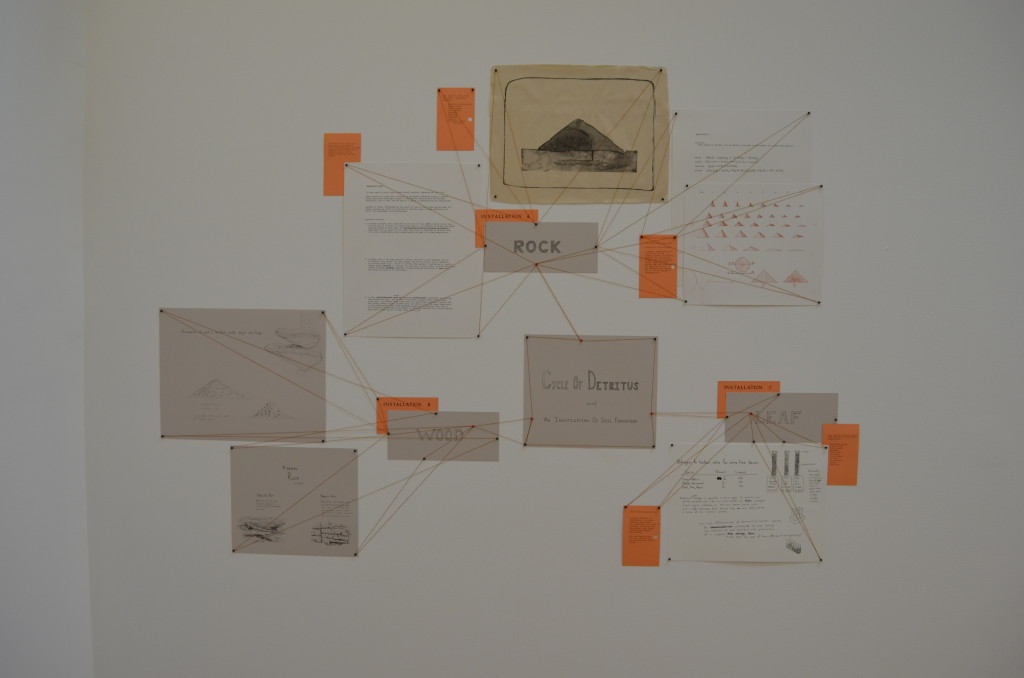
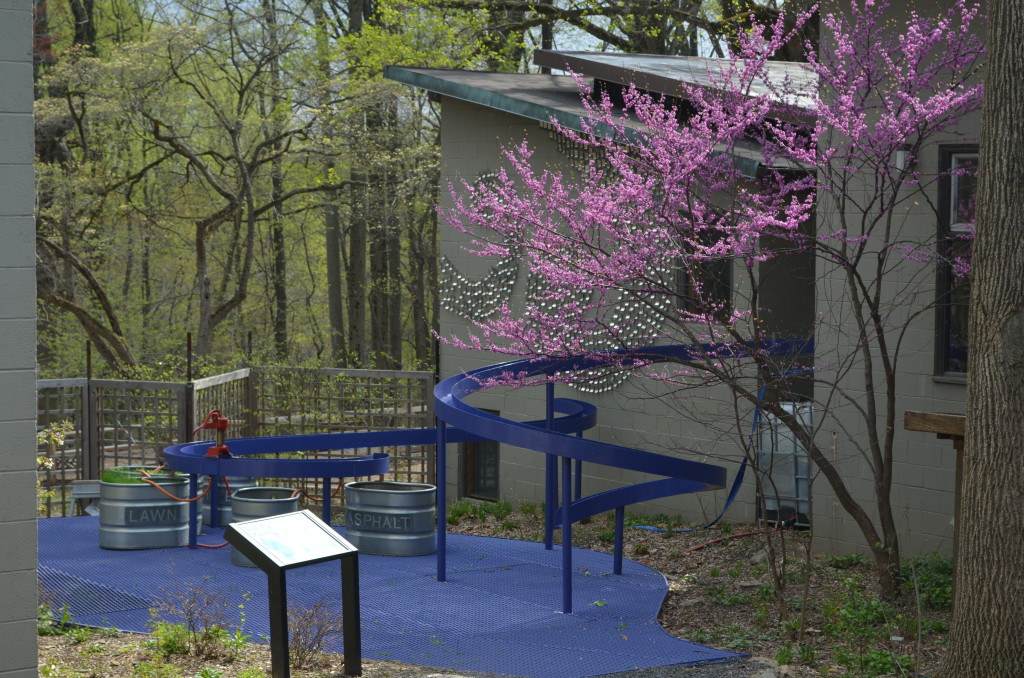
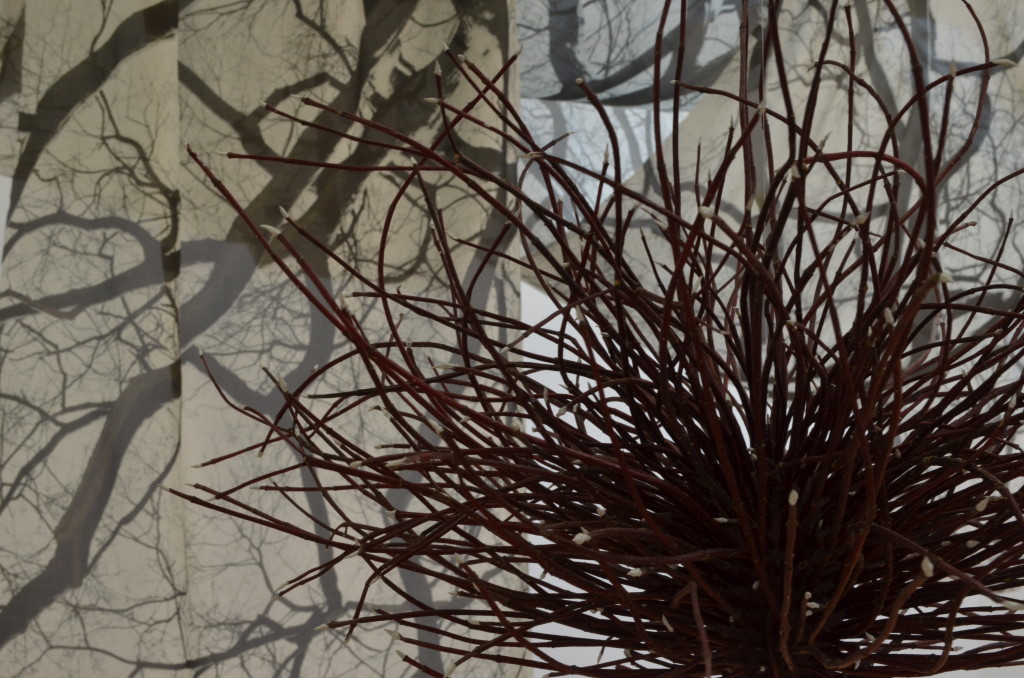
![[fellowship] Second Home (March 24 - May 4, 2013) Gallery Artist: Maggie Mills Curated by Jenny Laden](http://www.schuylkillcenter.org/blog/wp-content/uploads/2015/01/Fellowship-from-Second-Home-Maggie-Mills-817x1024.jpg)
